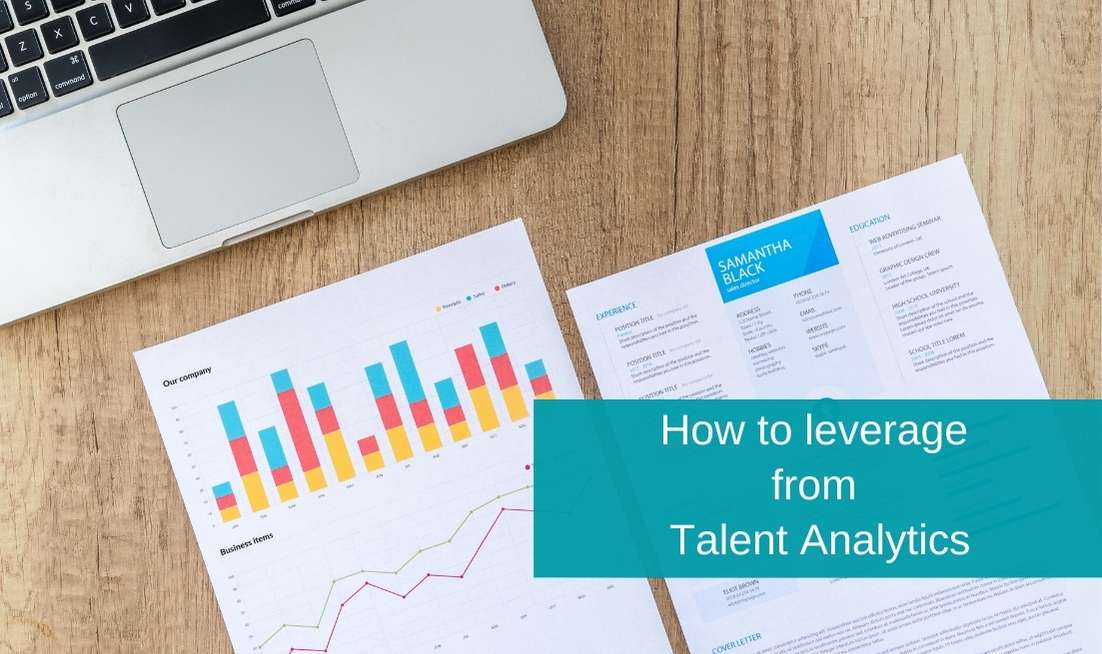In today’s data-driven world, analytics have become an increasingly important aspect of HR. But many businesses are still lagging behind in the use of analytics. Talent Analytics is a critical activity where both qualitative and quantitative data matter; it provides essential metrics and takes the guesswork out of recruiting talent. It is even more important to companies when they are faced with increasing talent shortages.
Talent Analytics is currently rated as one of the top priorities for HR leaders. Yet, many people still rely on their gut feeling and bias when making hiring decisions. Talent Analytics enables talent acquisition managers and recruiters to function more intelligently and work smarter. Designed and implemented well, it can provide a game changing opportunity for HR and talent acquisition.
What is Talent Analytics?
The term “Talent Analytics” – also called human resource analytics – refers to a data-driven strategy for your potential hiring pool and existing talent. It is a systematic analysis of employee data, to derive insights into the workforce and a better understanding of the strengths and weaknesses. It also gives insight into gaps of present and prospective employees that need to be addressed.
Statistics and technology help facilitate Talent Analytics, with the purpose of supporting HR and recruitment teams to locate the best candidates and forecast the future.
Deloitte’s recently published survey revealed that only 4% (!) of organisations surveyed, believe they have predictive Talent Analytics capabilities. Furthermore, only 14% of companies have a Talent Analytics programme put into action. And over 60% want to build a plan within a year. So despite the fact there is a lot of “noise” around the topic, there is a world to win in this area.
Early adapters clearly benefit from using analytics to boost business performance. They have been incorporating workplace analytics into all facets of human resource management (HR analytics), including hiring and performance management. This has shown to be quite helpful in locating unexpected talent sources and offering counterintuitive insights into what drives employee performance.
What are the components of Talent Analytics?
As you collect data to make critical decisions in your organisation, you improve individual and organisational performance. Regardless of the data collection method you rely on, your Talent Analytics initiative should include these three components:
- Hiring Analytics – Employers can learn more about potential workers by examining their talents through hiring analytics. It also directs the business toward an objective conclusion about the data.
- Ongoing Feedback Analytics – It focuses on the current workforce and assesses performance by examining their skill sets, talent, and where they currently are. Using continuous feedback analytics, you can identify:
- Employees that can be upskilled
- Those who have leadership potential
- The weak links affecting productivity
- Employees that can do better in another role
- Optimisation Analytics – To ensure that the business has everything it needs to make its internal processes robust, optimisation analytics combines all facts and forecasts from hiring analytics and ongoing feedback analytics.
Why does Talent Analytics matter?
Talent Analytics is needed for context, meaning and insight. If used more proactively, the information derived from data and analytics reports can significantly help realise the full potential of employees and your organisation in the following ways:
Understand attrition rates
As work flexibility grows and attrition rate increases, Talent Analytics is pivotal in business settings, since it helps organisations understand the reason for turnover. They can also develop a model that will increase retention rates by using analytics to determine what employees value most.
Identify the right ‘Time to hire’ and ‘Cost per hire’
Hiring the wrong candidates can be costly. For this reason, organisations can use Talent Analytics in their hiring process to make more strategic decisions relating to talent demands in real time.
Talent Analytics is essential for every hiring manager, recruiter, or talent acquisition specialist who intends to compete for the right talent at the right cost. For example, do you know your ‘Cost per hire’? Understanding such numbers is very important in this day and age.
Identify top-performing employees and high potentials
Another way that Talent Analytics matters is that it supports the identification of high-potential and high-performing individuals. It assists in understanding their behaviour, identifying leadership skills and potential skills to develop.
Improve succession planning
Talent Analytics allows organisations to effectively plan for succession and analyse business opportunity data. This way it helps organisations determine which characteristics are the strongest predictors of successful succession and which most influence retention.
Improve diversity
Having a diverse team is beneficial for organisations. Teams with more diversity are more innovative and can drive results. They can address issues more quickly, are better performers and make smarter decisions.
To conclude
The labour market has become tighter, while the talent gap is widening. For HR and talent acquisition to meet the market demands, gain access to a diverse talent pool and make the best of their existing talent, it is not too late to explore and utilise data-driven insights.
 About the author
About the author
Eugène van Berkel is Managing Partner at TalentIn. With his expertise he helps organisations build and execute their workforce strategy, making sure that what is designed can be implemented.
TalentIn has extensive national and international experience in developing and improving strategies for the recruitment of your permanent and temporary staff. We know how these strategies can be designed and implemented successfully. We advise, but can also provide practical support. Are you interested? Please contact us for an appointment without obligation via www.talentin.eu, info@talentin.eu or +31 10 307 54 22





